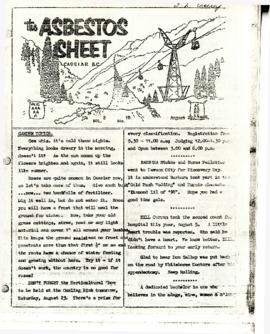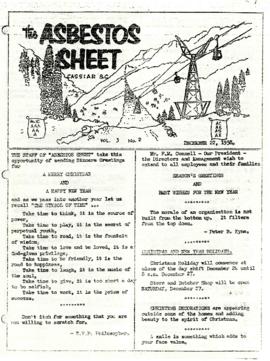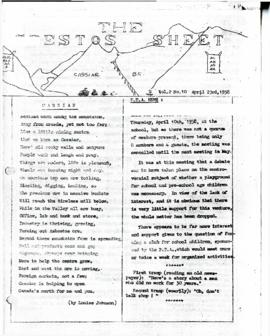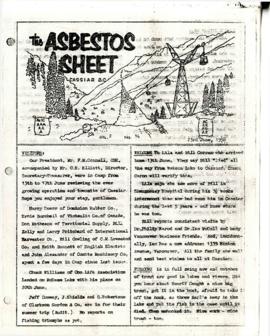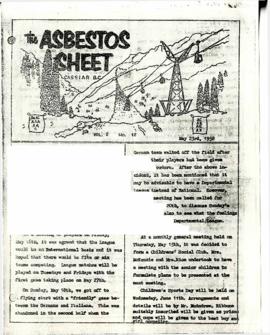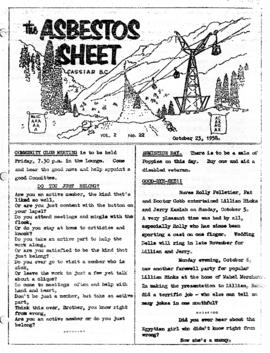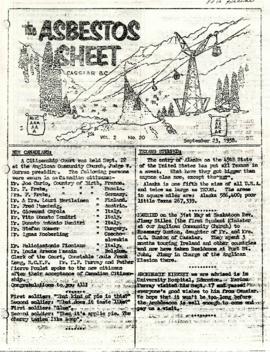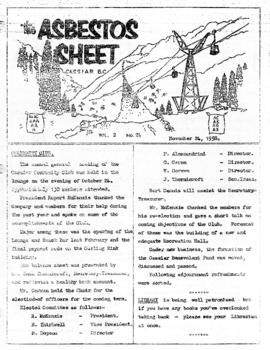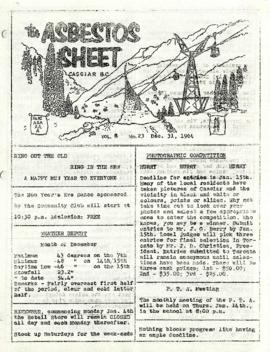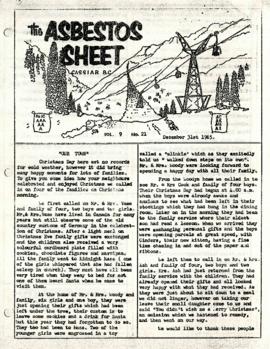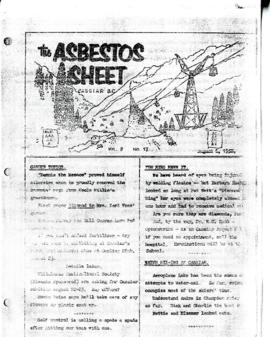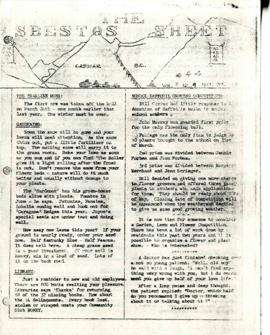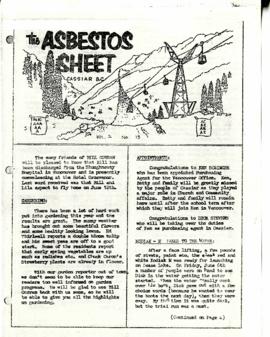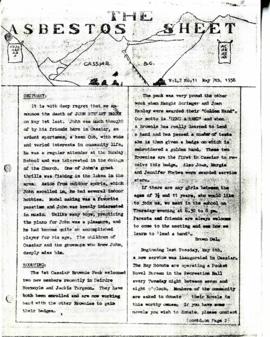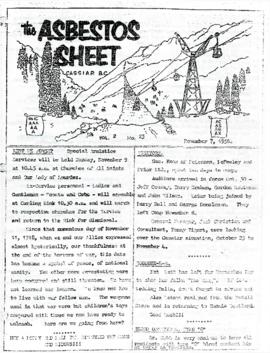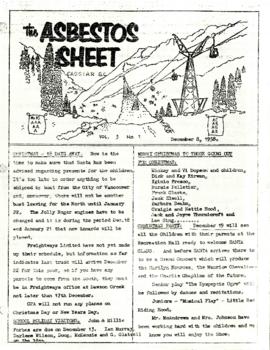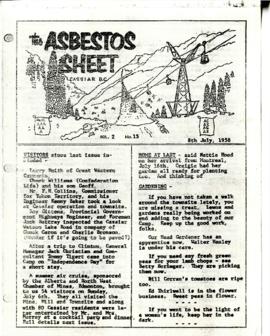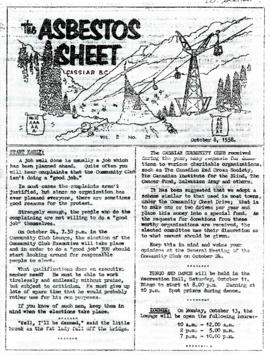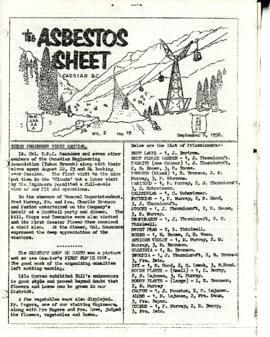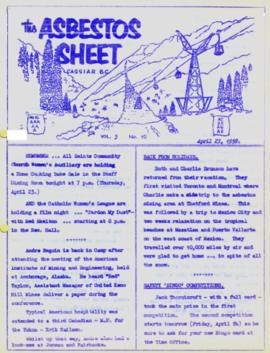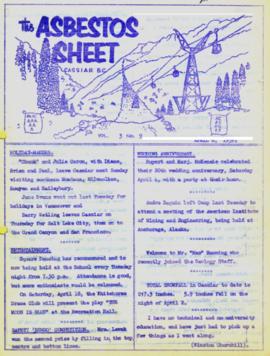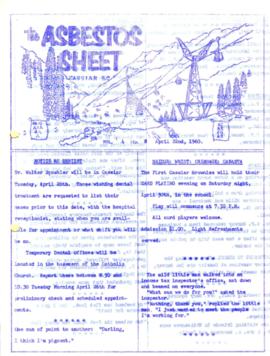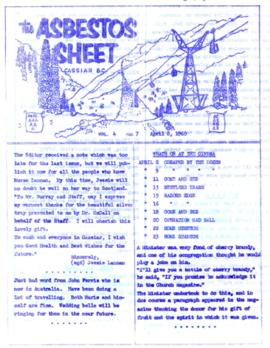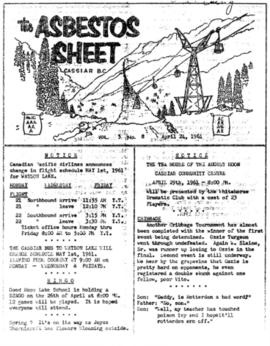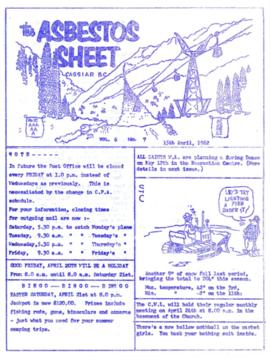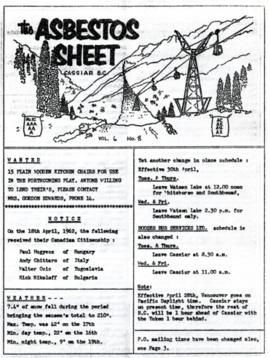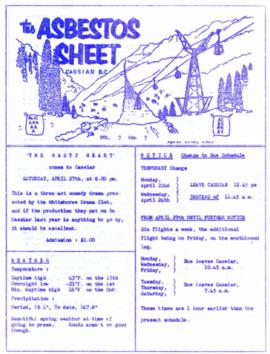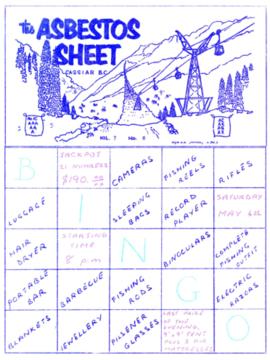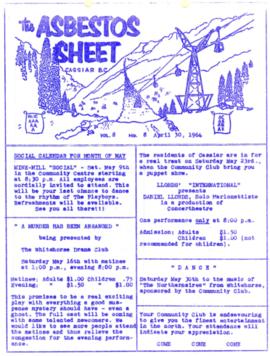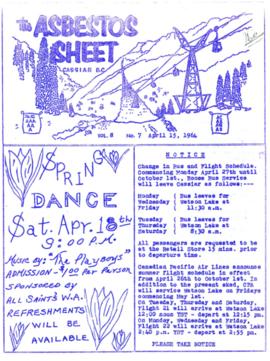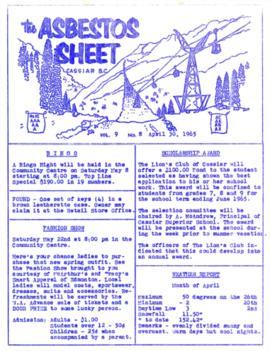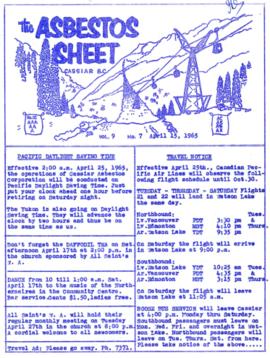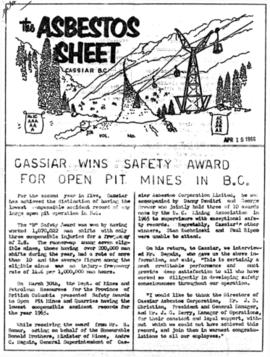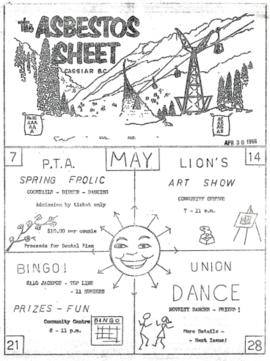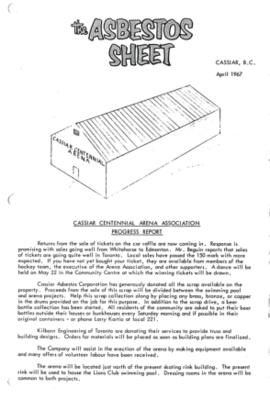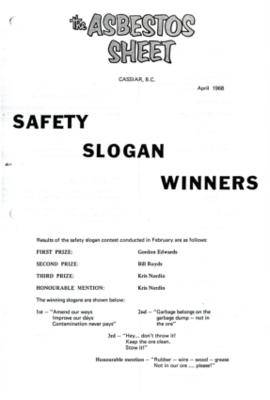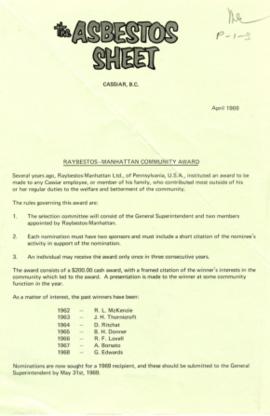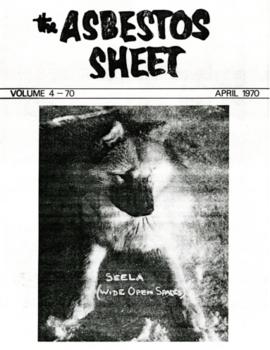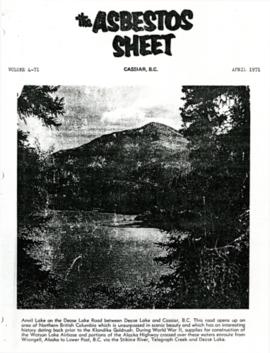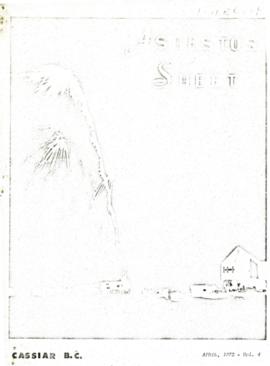The Cassiar Asbestos Corporation and townsite records encompass a massive archival holding of approximately 1,600 bankers boxes. A box level inventory was created by student employees of the archives over a 15-year period. This inventory is provided here for access purposes only and its accuracy cannot be guaranteed.
In 1952 the Cassiar Asbestos Mining Corporation constructed an asbestos open-pit mine and mill and created a town site for its workers that became the town of Cassiar, British Columbia, 50 miles south of the Yukon border, and 80 miles north of Dease Lake. For 40 years Cassiar was a thriving asbestos mining town with a population at its peak of about 2500, with production statistics for 1989, recording over 60 million tonnes of ore mined, producing a billion dollars of new wealth. In 1989 Cassiar added an underground mine to the site, and despite attempts to run it profitably, in 1992 the entire mine closed partially due to the global market decline in the demand for asbestos, resulting in the closure of the town, and the move of its workers and families out of Cassiar. An auction was held to sell off all the mining equipment, townsite infrastructure, its buildings, people’s residences and the site was bull-dozed, with many houses burned to the ground. Today little remains in this remote area of Northern British Columbia to mark Cassiar’s industrial, economic or social history.
In 1992 the University of Northern British Columbia acquired the holdings of CAMC and the Cassiar townsite recognizing its potential for academic research, as the records could provide insight into natural resource industry extraction operations in Northern BC from mid to late 20th century, illustrative of ‘boom & bust’ industries, and to provide context to the development of the Cassiar Asbestos Mining Corporation and the history of the ‘life’ of a one-industry company town. The holdings document mining operations by CAMC and of the town site of Cassiar, originally consisting of the equivalent of 1800+ bankers’ boxes, including records on construction, engineering, operations, administration of CAMC, tallies of extractions, labour and union activities, corporate events and visits by dignitaries (including Prime Minister Trudeau who visited CAMC’s northern operations unit in Clinton Creek in 1968 and M.P. Iona Campagnolo in 1978). As CAMC was owner of both the mine and the Cassiar town, the company provided municipal services (i.e. sewer, water, and electricity) for its workers and their families. The archived municipal records document townsite construction, including the creation of health, education and community services such as Cassiar’s private hospital, school, library, community centre, hockey arena, and retail store. The holdings also include extensive visual documentation of natural and man-man landscapes within this remote and scenic area of Northern British Columbia. The formats of the archival holdings are diverse consisting of textual, photographic, cartographic materials, electronic records, films, promotional video-recordings, and a near complete run of the Cassiar community’s print newspaper.
